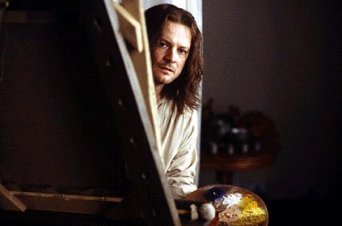The end result, "Girl With a Pearl Earring," co-starring Firth and Scarlett Johansson, opens this Friday at the Seven Gables and the Uptown. As very little is known of Vermeer's actual life, Firth had to find meaning in the paintings. "When you've got a bit of a blank canvas, you just have to impose your own notions on it," said the actor in a telephone interview. "I couldn't make up my mind whether (Vermeer) was a tortured soul or a rather serene fellow." But that corner of the studio, where so many of Vermeer's great works were created, haunted Firth. "I thought, that corner of that room that he keeps painting, maybe there's a restlessness to that, despite the seeming serenity of the paintings themselves. I thought, is he trying to solve something? Is he looking for something there? "That was something that I could bear in mind when I'm in front of the cameras—he is someone who is constantly looking for that serenity that he portrays, and he seems to keep looking for it in the same spot. He's got the whole rest of the town to paint—there's one example of a cityscape, one exterior of houses, a few others. The rest of the time, he paints the same corner of the same room, over and over." In the film, Firth's Vermeer is a quiet man, seemingly overshadowed by his petulant wife and regal mother-in-law, frustrated by the demands of his patron Master van Ruijven (Tom Wilkinson), who seems to want to control the artist like a puppetmaster pulling strings. But in the crisp, blue-gray light of the almost-bare studio, he breathes more freely—like he's in control of this small but perfect domain. Firth, no stranger to period roles (he's perhaps best known for his dashing performance as Mr. Darcy in the BBC miniseries "Pride and Prejudice"), viewed as many Vermeer originals as possible in preparation for the role, though he says it takes "a bit of a world tour" to see them all. Four of them reside handily in London— "the best one the Queen's got, under a bit of strip lighting next to a picture of a horse." (It's clear what he thinks of Her Majesty's curatorial standards.) And he worked to keep the story simple, letting images and actions speak louder than words. "What I brought to it was a feeling of, the less said the better. A lot of the paring down of dialogue was my responsibility. With the full endorsement, I must say, of the writer (Olivia Hetreed, who adapted Tracey Chevalier's novel). She was always looking out for a possibility of economizing." Firth, also recently seen in theaters in the romantic comedy "Love Actually," is currently at work filming another big-screen adaptation. "Bridget Jones: The Edge of Reason," a sequel to the popular 2001 film "Bridget Jones's Diary," will be in theaters in late 2004, with Firth, Hugh Grant and Renée Zellweger reprising their roles. Though Firth said he was initially reluctant to make a sequel, he now says he has "high hopes" for the film. "The only sensible attitude to it was to be cautious. People want the same film and they don't want the same film. You have to really hit the right note with this thing. As long as you can take it forward in some way, it's justified." The classically-trained actor, whose dark eyes and stalwart bearing have inspired legions of female fans, is amused by his inadvertent heartthrob status. (Told of a colleague who packed her "Pride and Prejudice" tape for a trip to the labor room, his response was a heartfelt—and horrified—"Oh my God!") In Helen Fielding's book "The Edge of Reason," on which the "Bridget Jones" movie sequel is based, the fictional Bridget conducts an interview with the non-fictional Colin Firth. Unfortunately she keeps getting muddled because she's obsessed with the "Pride and Prejudice" scene, beloved by many, in which Mr. Darcy jumps into a lake and his shirt gets wet and clingy. "I did that interview with Helen Fielding," Firth remembered. "She didn't make it up, we actually did it. It's fun to be written into a piece of fiction. I guess that sort of thing is more common because popular culture draws on itself increasingly for its sources." Mindful of the power of surprise, Firth politely declined to discuss how that particular scene would be handled in the film. Nor would he comment on whether the notorious reindeer sweater, worn by the hapless Mark Darcy in "Bridget Jones's Diary" would reappear. Mark Darcy was, undoubtedly, less of a challenge than Vermeer—though in retrospect, Firth thinks he found the latter character only when he stopped working so hard. "In some ways, I reached my frustration in not being able to nail anything about (Vermeer)," he says. "I just thought, maybe this is it—you can't define anything. So I stopped trying, and let that somehow characterize what you do." |
